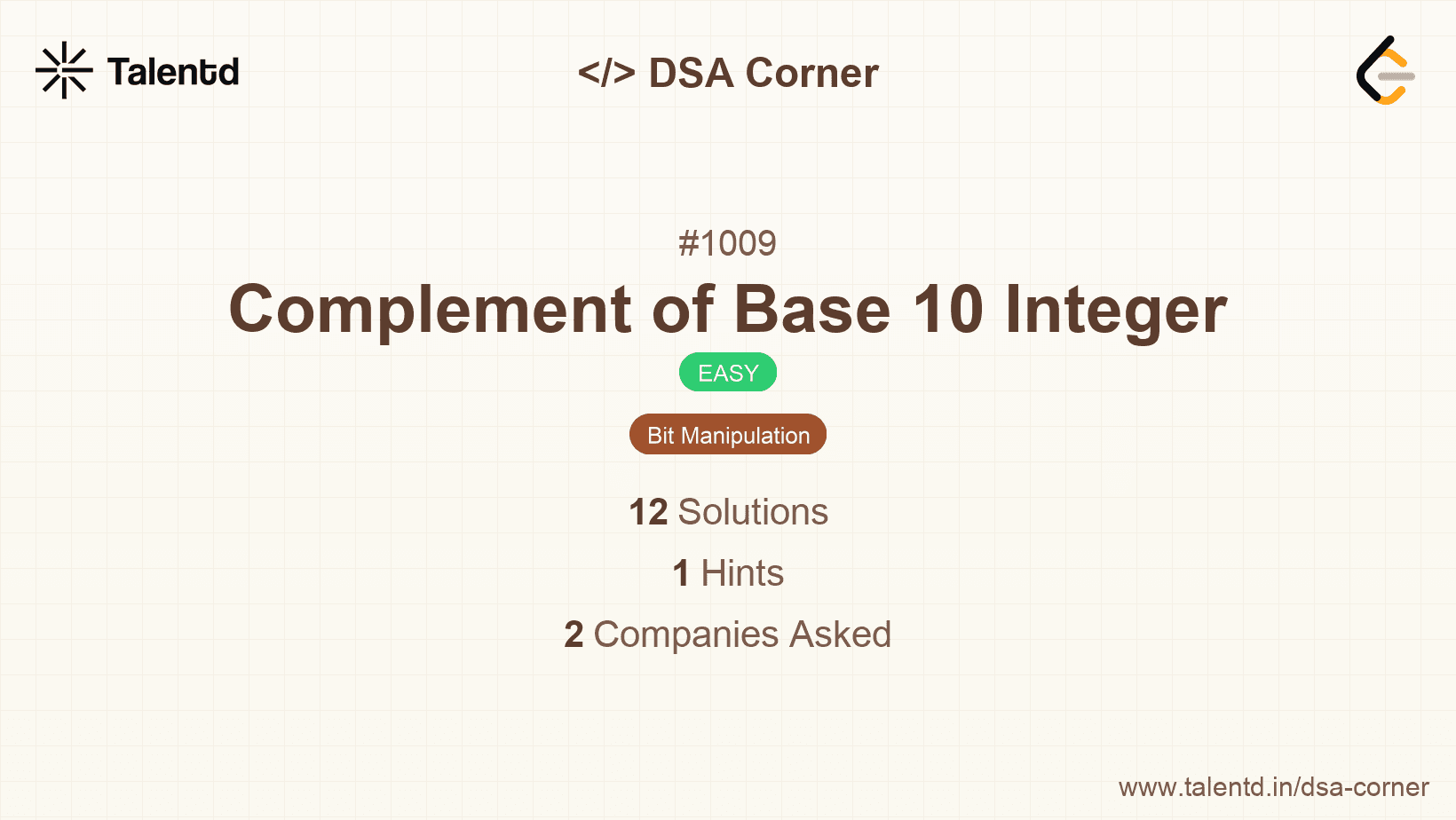
Sponsored
Sponsored
This approach involves calculating a mask of the same bit length as the number and then using XOR to flip all the bits. The mask is calculated as a sequence of 1s of the same length as the binary representation of the number. For any number 'n', the mask would be computed as (1 << number_of_bits) - 1.
Time Complexity: O(log(n)) as we are shifting bits for the length of the number.
Space Complexity: O(1) since we are using a constant space.
1#include <iostream>
2using namespace std;
3
4int bitwiseComplement(int n) {
5 if (n == 0) return 1;
6 int mask = 0;
7 unsigned int m = n;
8 while (m) {
9 mask = (mask << 1) | 1;
10 m >>= 1;
11 }
12 return (~n) & mask;
13}
14
15int main() {
16 int n = 5;
17 cout << bitwiseComplement(n) << endl;
18 return 0;
19}This implementation operates similarly to the C solution. A temporary mask is created to determine the full length of n in binary. Once the full mask of 1s is derived, XOR is used against ~n to derive the complement.
In this approach, instead of calculating a mask using shifts, we use mathematical expressions. We calculate the highest power of 2 greater than n, subtract 1 to get a mask with all 1s up to the highest bit set in n. This mask is then XORed with n for the result.
Time Complexity: O(log(n)) for shifting mask while determining the next power of 2.
Space Complexity: O(1) as only simple variables are used.
1
This Java implementation uses the approach of identifying the mask via powers of two, then calculating the complement by XORing n against the mask. It minimizes operations to derive the precise mask needed.